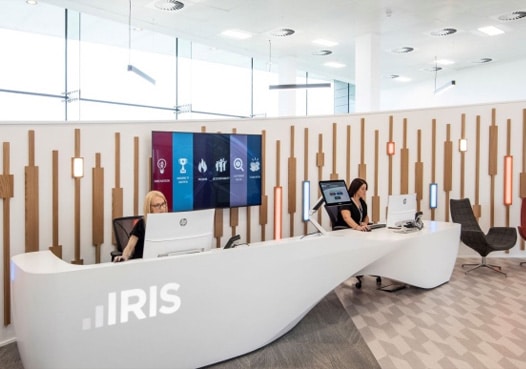Spring Budget 2023: getting people back to work
Updated 17th March 2023 | 4 min read Published 15th March 2023

It’s no secret that UK businesses are struggling immensely with recruitment, as many roles sit vacant for months on end, placing added pressure on current employees to pick up the slack.
Today, the Spring Budget 2023 outlined the Government’s plans to get out-of-work people back into employment as a means of tackling the talent shortage.
Amongst what was announced, a few key plans include getting early retirees and those with disabilities back to work, alongside providing added childcare support.
What exactly did the Spring Budget 2023 announce?
Chancellor to the Exchequer, Jeremy Hunt, kicked off the Budget announcement, saying he’s “tackling labour shortages that stop businesses recruiting and breaking down barriers that stop people working.”
Raised during the Budget was getting early retirees back to work; the Government will offer “returnships” which operate alongside skills boot camps and sector-based work academies "targeted at the over 50s who want to return to work", alongside increasing the pensions annual tax-free allowance from £40,000 to £60,000 and abolishing the Lifetime Pensions Allowance.
Regarding getting those with disabilities back into work, Hunt announced a voluntary employment scheme for disabled people where the Government will spend up to £4,000 per person to help them find appropriate jobs and put in place the support they need.
As for childcare support, Hunt aims to support parents back into work by offsetting the cost of childcare – a much-needed initiative as many struggle getting back into work following early parenthood as the costs of childcare often outweigh the benefits of returning.
For households where both parents are working, Hunt announced 30 hours of free weekly childcare is being extended to cover children below the age of three and will eventually cover all children from the age of nine months.
See the full Budget announcement here.
Business pressure: three ways to support recruitment and those returning
In theory, what the Government announced today is fantastic – getting more people back to work not only helps with the talent shortage but also bolsters better representation and diversity.
However, a great deal of involvement is needed from businesses to MAKE THIS WORK.
We can’t expect those who have left full-time employment to simply return and readjust without some level of assistance.
Businesses need to help returning employees; alongside re-evaluating jobs suitable for returnees, what else can businesses and HR professionals do to support?
Focus on training and upskilling
Without sounding overly cliché, the world has gone digital.
Returnees bring with them a host of great skills and competencies, but the admin and operational parts of the working world have changed quite significantly.
For those who have been out of work since before Covid, chances are, they missed the rapid technological acceleration.
What does this mean for businesses? Identify gaps and training needs to support returnees.
From communication platforms such as Teams and Zoom to using digital HR software when booking annual leave, all day-to-day aspects need consideration and training in place.
Additionally, digital aside, with some added training and support to broaden returnees’ skills, they could embrace and thrive in completely new roles.
Think hard about your flexible working policies
What do returnees actually want? This question must be at the forefront of your mind when looking to design attractive roles and bring on board people.
Those benefiting from the childcare changes may be happy to come back full-time, but they could require some additional flexibility in their day to accommodate their families.
Perhaps early retirees have moved abroad, so while happy to come back to work, they need location to not be a restraining factor.
Those with disabilities might not be able to manage a 40-hour workweek and instead prefer part-time hours.
Regardless of the scenario, a mindset shift is needed, with tweaks to your policies and flexible working at the forefront of your business, you can make strides in filling the talent gaps.
More content: We recently covered the 4-day workweek trend and the importance of flexible working – read here.
Optimise the onboarding experience
Ensuring a smooth and effective onboarding is vital – especially if the returnees are in a remote position, meaning they can’t just ask the person next to them when they have ad-hoc questions.
Use HR software to create a bespoke induction, offering all the information they need at the touch of a button + with HR software, you can begin sending key information/policies and offer tailored e-learning pre-employment, helping eradicate any jitters before they’ve even started.
Top tip: for managers, set up a dedicated time each day to check in with your new returnee to see how they’re fairing and also consider creating a special forum for returnees where they can share concerns/thoughts.
Let’s work together
Unfortunately, the cost of living remains an issue, which may have placed pressure on those out of the workforce to return, or perhaps some are simply looking for a change to their day-to-day and fancy a new career.
With some careful consideration and a little teamwork, these new Government plans can help empower people and bring more diversity to the business world.
Apart from issues with recruitment and retention, what else is impacting businesses?








